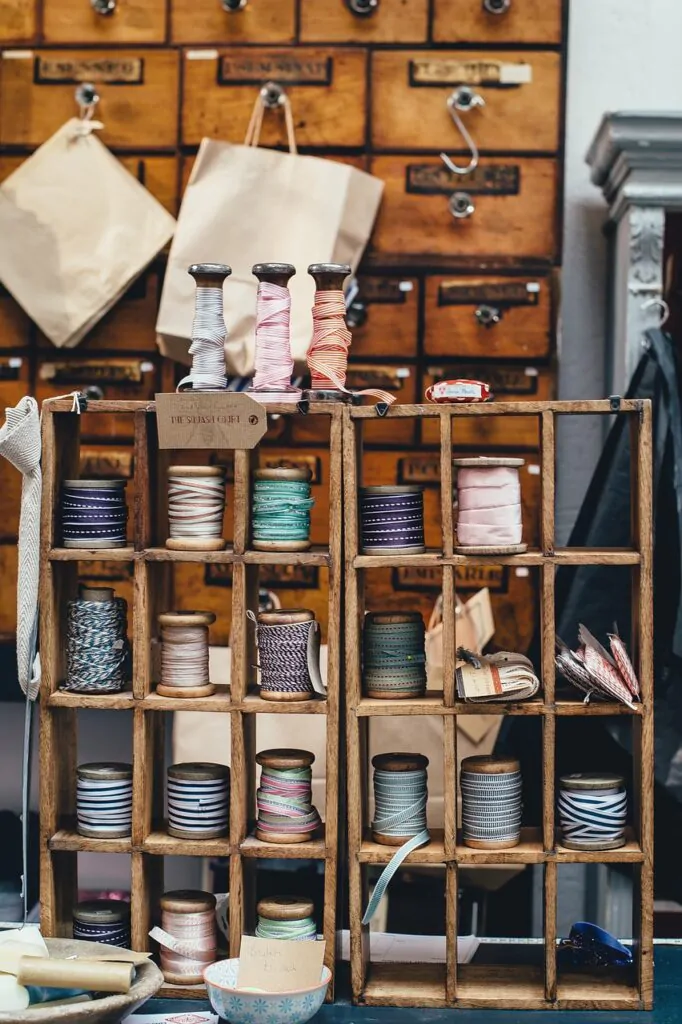In this article, I’ll explain how you can live a creative life, find more satisfaction and get paid for your hard work.
What does living a creative life look like today? Years ago, the cliché of living a creative life described wandering the streets of Paris by day, and painting in a studio or writing in a coffee shop over a bottle of wine into the night.
These days, if you’re working in the creator economy, living a creative life appears to manifest itself online. But creative work still requires long periods of introspection and deep focus which.
Even savvy online content creators need to spend extended periods writing, recording, and editing without distraction and often while disconnected.
Finding a balance between this type of work and connecting with an audience or other creators online is a balancing act. Below, I explain how you can live a creative life and thrive in the creator economy.
Contents
Cultivate The Right Habits
Here’s a common myth about creativity. Creators laze around all day on the couch or sofa and wait for a great idea to strike. Then, after this Eureka moment, they jump up and get to work.
But living a creative life is hard work. Like professionals, you need the proper work habits. They’ll help publish high-quality content more frequently, connect with your audience and protect creative work from inevitable day-to-day demands.
- Work on creative projects at a set time or in a set place every day
- Write a set amount of words or for a set time every day
- Record a certain number of videos or podcasts each week
19th-century French novelist Gustave Flaubert said it best:
Be regular and orderly in your life so that you may be violent and original in your work.
Spend More Time Creating Than Consuming
It’s easy to wake up, reach for a smartphone and spend the first hour of the day doom scrolling on a news website or social media. However, it’s harder to wake up and work a little on a creative project first thing.
But, the right creative habits mean spending more time creating than consuming. Early mornings and late evenings are usually the most fertile periods for creatives, so use them to make something rather than consume media.
Experiment and Take Risks
Every now and then, approach creative work like a crazy scientist tinkering on their next experiment.
If you’re a new creative, explore different genres and content formats, and niches until you develop a new creative voice or connect with your ideal audience. If you’re more established, experiment as a means of pushing your craft in new directions.
For example, a genre fiction writer could try writing a little poetry. Or a content creator could spend several hours studying a new format, like non-fungible tokens (NFTS), to understand it it will help you earn a better living as a creator.
Taking risks also means pouring some of yourself into your work even though you may face rejection or the results won’t sell or resonate with your ideal audience.
Make Creative Mistakes
Creative work involves making and learning from mistakes. American radio host Ira Glass said it best:
“Everybody I know who does interesting, creative work they went through years where they had really good taste, and they could tell that what they were making wasn’t as good as they wanted it to be. They knew it fell short. Everybody goes through that.”
I struggled with this one for a while, but then I learned work by top-tier creatives sometimes makes its way into the marketplace … with typos and other errors.
Consider the first edition of McCarthy’s 2006 post-apocalyptic novel The Road. In the first edition, a passage described “a moment of panic before he saw him walking along the bench downshore.”
Later editions changed “bench” to “beach”.
These types of mistakes serve as examples that even high-end creative projects with seemingly unlimited resources are imperfect. So, get comfortable with making mistakes in your work … and public.
Learn From Other Creators
As part of your reading time, study how past creatives approached their craft.
It’s relatively easy to learn from current contemporaries or influencers online by taking their courses and consuming their content. But, you’ll learn more by studying famous creatives from history. Read their biographies and study their influences.
How did they overcome problems like a lack of inspiration, going broke, or a midlife creative crisis?
In his autobiography Last Words, George Carlin describes overcoming a creative crisis and finding his edgy comedic voice. He told his then-wife:
“I’m going to be the person on the outside that I’ve been on the inside my whole life.”
So study how other creators approach a problem Creativity is all about combining different ideas from different sources in unusual ways.
Do The Work
An orderly routine is key to finding success in the creator economy. Perhaps this involves working in the morning before work until your content business becomes more than a side gig? Consistency matters.
After all, what will you do when life intervenes, or you miss a couple of days?
In On Writing, Stephen King describes the importance of writing for several hours every morning.
My own schedule is pretty clear-cut. Mornings belong to whatever is new – the current composition. Afternoons are for naps and letters. Evenings are for reading, family, Red Sox games on TV, and any revisions that just cannot wait. Basically, mornings are my prime writing time.
Ship It
The artist Pablo Picasso holds a Guinness Book of World Records as the world’s most prolific artist with over 13,500 paintings, 100,000 prints, and 300 sculptures.
Anyone working in the creator economy can learn from his work ethic—screw perfectionism. Press publish and ship more frequently. Even if you’re unhappy with the results, shipping often forces seeing a creative project through to completion.
It enables connecting with the marketplace and improving through real-world feedback. And it unlocks more opportunities for connecting with other creators. Shipping will teach you more about what works and most importantly, sells.
Go On Artist Dates
Author Julia Cameron proposed the concept of artist dates in her book The Artist’s Way. She describes this concept as “assigned play”, whereby you go on a solo expedition to explore something that interests you, like a new play, a class, or a trip to the museum.
These trips or dates are fuel for your next article, book, or creative project. Take notes and figure out interesting stories and anecdotes for your work.
Several years ago, while on holiday in St. Petersburg, I woke up hungover and spent a morning wandering around an art museum with friends. I didn’t think much of the museum until I stumbled across a painting by Henri Matisse on my way out. I bought a print of that painting and hung it over my desk at home.
Connect With Other Creators

Creators regularly complain that friends and family working in unrelated fields or professions don’t get it. They’re unlikely to empathize with a creative dilemma or a lack of inspiration.
So, who can you talk to about it? Connecting with like-minded content creators helps, like other writers, content creators, or publishers. You explore issues and swap anecdotes. Think of it as a virtual online water cooler.
Connecting with other creators also unlocks more opportunities for collaboration. Perhaps you could co-write a book, interview each other on your respective podcasts or promote each other’s digital products? That way, you can intermingle different audiences and potentially earn more.
Work On Your Art And Your Business
Many new content creators spend dozens, if not hundreds, of hours writing a book, recording videos, and creating content.
After finishing their passion product, they move on to the next project rather than promoting their last creation. They rail against asking for the sale, claiming marketing devalues their hard work.
As a result, they’ve less money or time to invest in a new project. Or they must find and hold onto a job unrelated to their work. Behold the cliché of the starving artist.

So what’s the solution? American playwright David Mamet said,
“You’ve got to do one thing for your art every day, and you’ve got to do one thing for your business every day.”
Why can you build that you own and which will generate income for you over time? Those succeeding in the creator economy understand they deserve to get paid, much like doctors or executives.
You could, for example, spend an hour or two hours in the morning writing, interviewing, editing, and recording video.
Then, in the afternoon, explore turning creative projects into a revenue stream for your content business. Could you:
- Acquire sponsors for your podcast
- Reach out to potential reviewers for your new book
- Repurpose your work as a course or another digital product
- Apply to an advertising network for your content website
- Join a partner program for content creators
- Build a membership community
- Speak about your work in public … or on YouTube
- Refine your content publishing strategy
How To Live A Creative Life: The Final Word
Getting paid to create is easier today, thanks to opportunities that exist within the creator economy. Using minimal resources, you can create content easily, connect with an audience and build a business.
Then, you can use this income to pay yourself, invest in your craft or your next creation, and ship something you’re proud of.